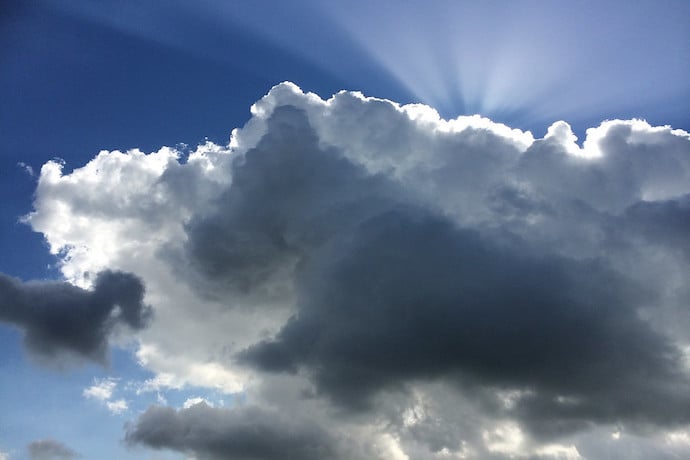“The cloud” has become a major part of our digital lives. But what do we know about it? We know that it stores lots of “stuff” from data storage to entire computers on the Internet. But why is it called the cloud?
As you might imagine, the term the cloud has nothing to do with actual clouds in the sky. We wouldn’t store data in rainclouds, because we’d lose all our backups when it rained.
Instead, the cloud got its name from the network diagrams that engineers make before they start programming so they can get an idea of how their networks will work. These diagrams show how all the pieces of the network communicate.
For example, if a network engineer wants to make an app that uploads data to the cloud, they need to work out how the data moves around the app. So they’ll draw up boxes to represent processes or storage, then show the data flow with arrows pointing to different boxes.
This gets a little tricky when the engineer wants to show data being uploaded or downloaded from the internet. The internet is really big; like really, really big. And it’s impossible for an engineer to know how data moves through the internet when someone uploads or downloads their data.
The solution? Represent the internet as a big blob on the network diagram. The engineer doesn’t know how data will move through the internet, and they don’t really care. All they need to do is show how their app uploads and downloads data and the internet can handle the rest.
What’s the most blob-like shape you can draw? For network engineers, it’s the shape of a cloud, much like the thought-bubbles you see in comics. This shape means “I dont know what exactly happens in here, but it doesn’t matter right now, so just imagine this area as a bunch of stuff.”
As such, when engineers designed apps that downloaded data from the internet, they would draw the cloud bubble, label it as “the internet,” and show data coming from it. In short, data would be “downloaded from the cloud,” and the reverse would be true for uploading.
Eventually, this term became mainstream and now we have stuff like “cloud storage” and “cloud computing.”
Just for fun, how would you draw the internet?
Learn More
What is Cloud Computing?
What is Cloud Computing?
https://www.pcmag.com/how-to/what-is-cloud-computing
Cloud Computing
https://en.wikipedia.org/wiki/Cloud_computing
Cloud Computing Facts for Kids
https://kids.kiddle.co/Cloud_computing
Types of Cloud Computing
https://www.redhat.com/en/topics/cloud-computing/public-cloud-vs-private-cloud-and-hybrid-cloud
Cloud Computing: How It All Works
https://www.youtube.com/watch?v=TTNgV0O_oTg
Cloud Computing: CNBC Explains
https://www.cnbc.com/id/43483060
Who Coined Cloud Computing?
https://www.technologyreview.com/2011/10/31/257406/who-coined-cloud-computing/
History of Cloud Computing
https://www.seasiainfotech.com/blog/history-and-evolution-cloud-computing/
Cloudflare’s description of the cloud, including the name origin
https://www.cloudflare.com/en-gb/learning/cloud/what-is-the-cloud/

